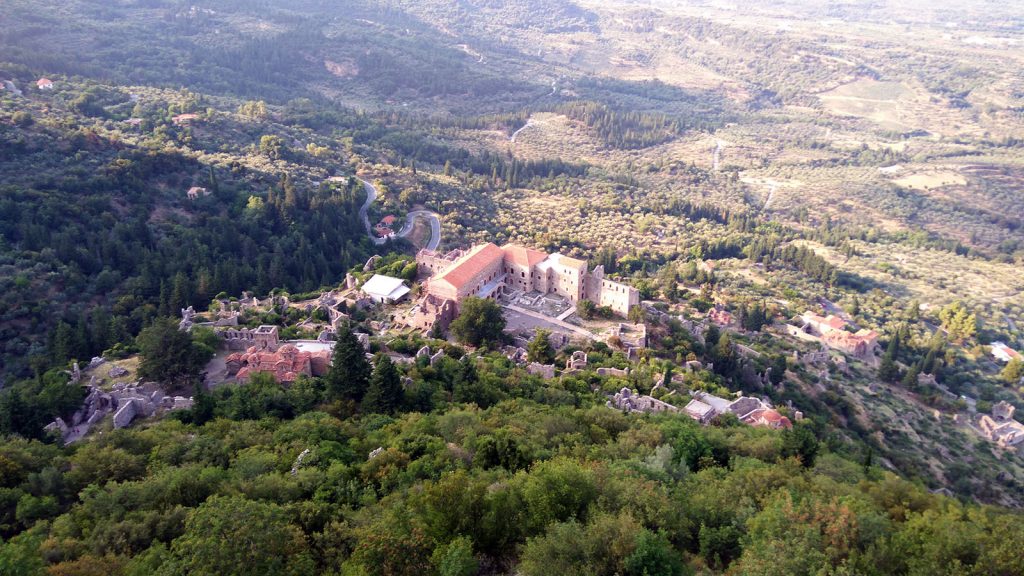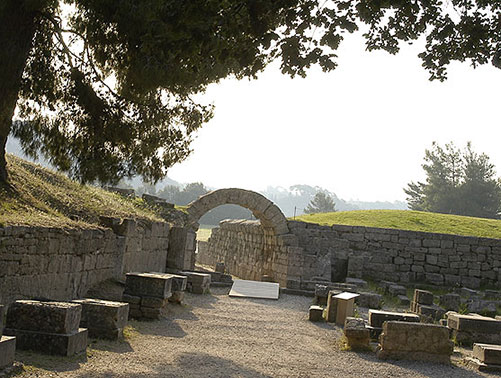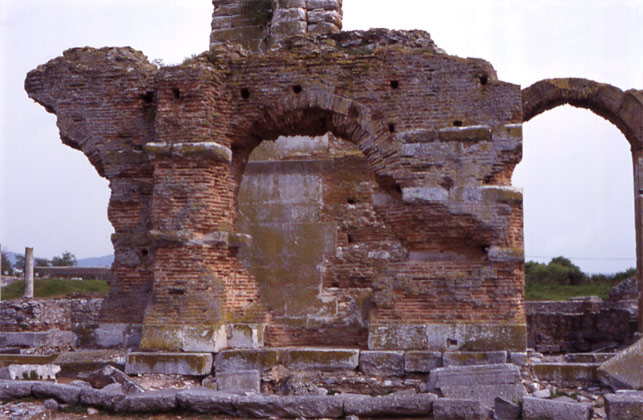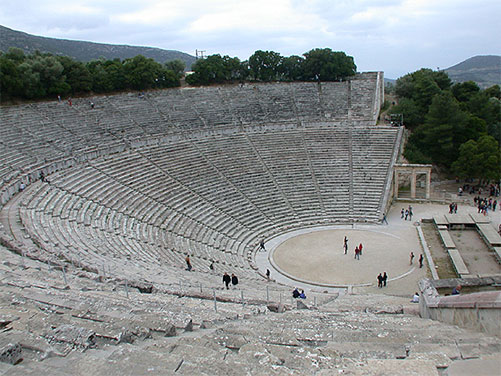The sanctuary of Epidaurus is located on a plain in the Argolid peninsula. Throughout its history it belonged to the maritime city-state of Epidaurus, about eight kilometers to its east. Despite the city’s marginal position in antiquity, the sanctuary was one of the most renowned. It became one of the most important sanctuaries in the ancient world and was considered the foundation of medicine. More than two hundred medical centers-Asclepeia in the Mediterranean were thought to have been founded under the auspices of the Asclepeion of Epidaurus, the most renowned of these being those at Athens, Kos, and Pergamon.
During its last flourishing in the Roman period, the sanctuary covered an area of about 25 hectares and included around sixty buildings and other facilities, built from the Archaic to the Roman period. Apart from the well-known theatre of Epidaurus, the most important of these buildings are the temple of Asclepius, the tholos (a circular space that was considered the residence of the god, the abaton (a stoa in which the faithful-patients stayed during the duration of their ritual healing), the gymnasium or hestiatorion, where holy meals took place, the Roman odeum, the stadium, among others.
The oldest traces of worship on the site were discovered about a kilometer to the northeast, on the slopes of Mt. Kynortion. In this location it appears that there was already a large sanctuary dating to the sixteenth century BC in which water, streaming from nearby springs, played a major role. Worship included sacrifices in an open-air altar and the faithful partook in ritual meals. We do not know to whom the sanctuary was dedicated at that time, but after 800 BC it seems to have been associated with Apollo. According to a later founding legend, Malos, the king of Epidaurus, founded on this site the sanctuary of Apollo Maleatas, near which his granddaughter Koronis gave birth to Apollo’s son Asclepius.
After the sixth century BC, the sanctuary’s fame and the number of pilgrims increased to such an extent that the facilities on the slopes of Mount Kynortion were insufficient. Thus, around the middle of the 6th century, the renowned sanctuary was founded in the valley, officially dedicated to Apollo Maleatas and Asclepius. However, in the sanctuary on the plain, the function of the space as a healing place was particularly emphasized. Water, which played an important role in the original sanctuary and which was, as a laxative, the main component of the treatment of the patient-devotee, was transferred from the springs on the slopes of Mount Kynortion to the plain through an underground aqueduct and collected in a sacred well. From there, through the usage of canals, it was distributed throughout the new sanctuary.
The treatment required that the patient lie down on the site, during which he would see the god in his sleep and would either be healed by divine intervention or he would hear what he had to do to be healed. The treatment was based on the belief of the ancients that every human disease has psychosomatic causes and that the power to restore health must arise from inside the patient himself. Consequently, priest-healers aimed to awaken this inner strength in patients which would restore the balance of both the soul and the body. Although this kind of therapeutic method led to various prejudices, it is clear that it laid the foundations for scientific medicine and revealed the importance of psychosomatic factors affecting human health.
The sanctuary flourished in the 4th and 3rd century BC, with most of its buildings constructed during these two centuries. The sanctuary experienced a second phase of flourishing during the 2nd century AD. Patient attendance must have been higher at this time, perhaps due to advances in medicine in the Roman period. During this time, some new buildings were constructed (e.g., the sanctuary of the Egyptians) and old ones were repaired with donations from the Roman senator Antoninus. In general, during the Roman period, there was a trend toward the creation of infrastructure for the hospitality of numerous patients, as well as the provision for large water reserves. It should be noted that, from the 2nd to the 6th century AD, seven bath complexes operated in the area. In the 4th century AD, a rectangular enclosure and a portico were built around the central area of the sanctuary, constructed from parts of older buildings that were abandoned.
The last surviving evidence for the operation of the sanctuary dates to the middle of the 4th century. At the end of this century, the area was looted by the Goths, while the official ban of paganism by the emperor Theodosius II in AD 426 marked the beginning of the end of the cult of Asclepius in the sanctuary. Nevertheless, the function of the area as a healing place did not cease but continued with the replacement of Asclepius with Christ the healer at the end of the 4th century AD, when a large early Christian basilica was built in the northern part of the sanctuary. The site was finally abandoned in the middle of the 6th century AD. Since then, the utilization of the site was limited (e.g., during the Frankish period the temple of Asclepius was used as a residence).
The famous sanctuary was first revealed during the excavations that started at the end of the 19th century by the Archaeological Society at Athens. The gradual revelation was accompanied by the need for immediate interventions to fix and restore the monuments, which were systematized with the establishment in 1984 of the “Working Group for the Preservation of the Epidaurus Monuments – OESME” (from 2000 to 2015 “Epidaurus Monuments Conservation Committee – ΕΣΜΕ”). A major problem that needed to be addressed immediately was the erosion of the tufa, with which most of the monuments (at least their foundations) were built and was aggravated by the sharp fluctuations of temperature and humidity over time. An additional problem is the concentration of rainwater that flows from the adjacent hills and the consequent alluvial formations. The phenomenon seems to have plagued the area since antiquity; archaeological excavations revealed a rise in the ground level in the sanctuary from the Hellenistic to the Roman period. This problem was solved by the construction of retaining walls that maintained the soil, and by the attempt to settle the descending waters.
Sources
Ν. D. Papachatzis, Παυσανίου Ελλάδος Περιήγησις, Κορινθιακά και Λακωνικά, Athens 1976, 202-215,
“Epidauros”, in R. Stilwell, W.L. MacDonald and M. H. McAllister (Eds.), Princeton Encyclopedia of Classical Sites, Princeton 1976, 311-314,
B. Lambrinoudakis (ed.), Το Ασκληπιείο της Επιδαύρου. Η έδρα του θεού γιατρού της αρχαιότητας, Athens 1999.









